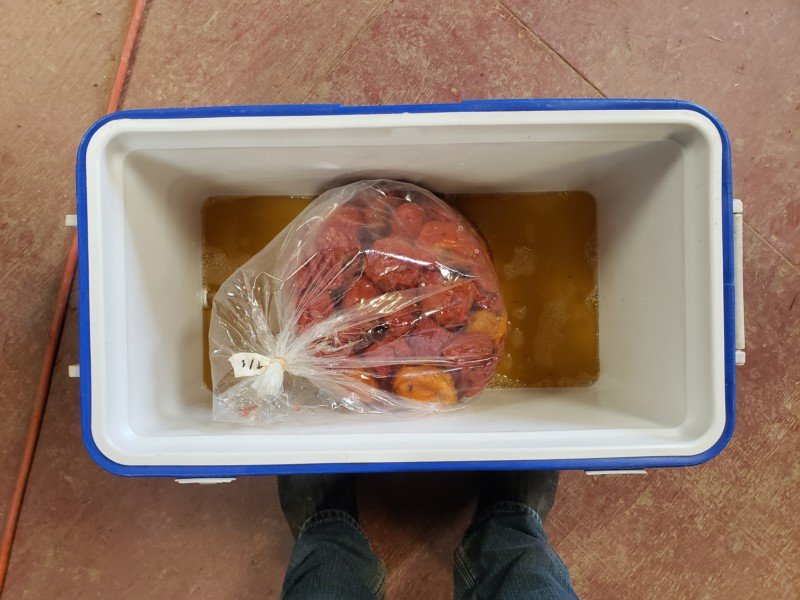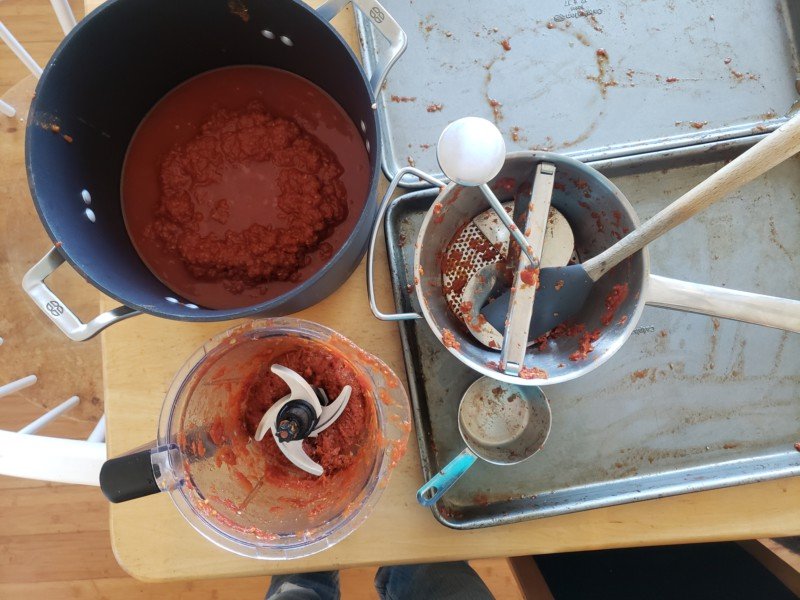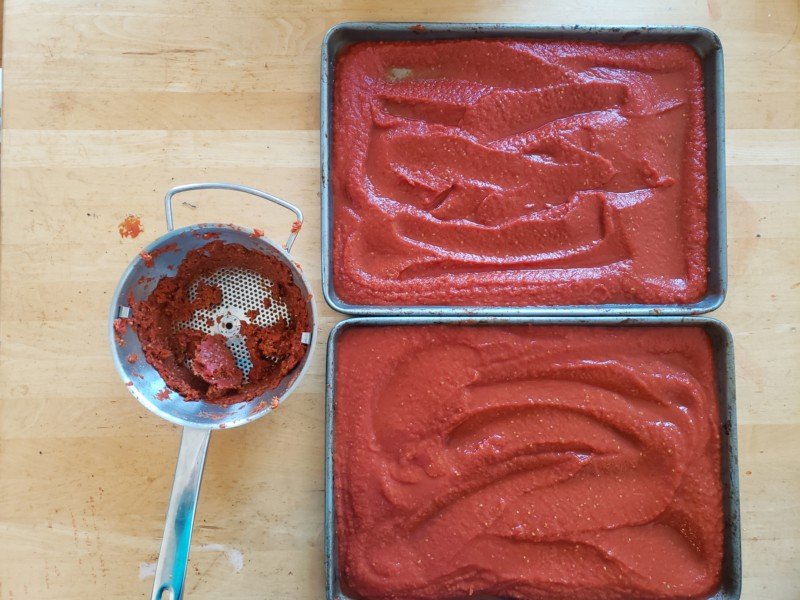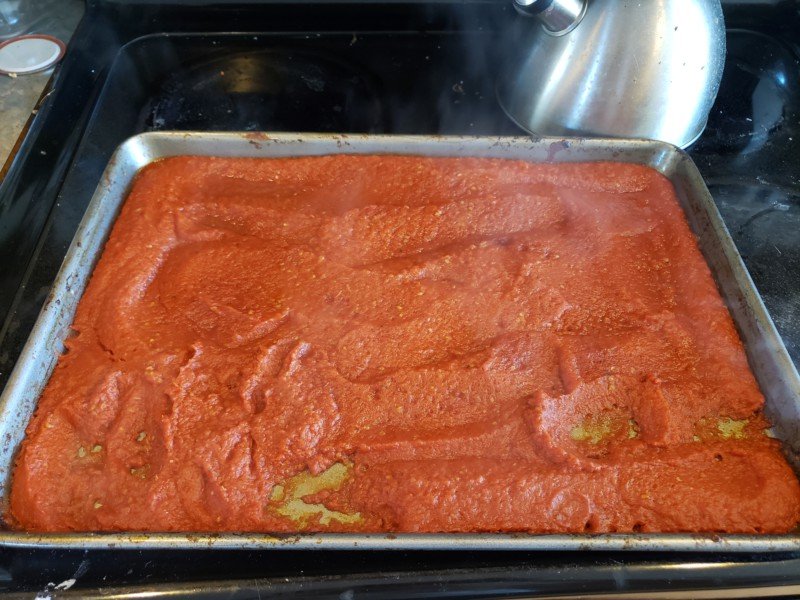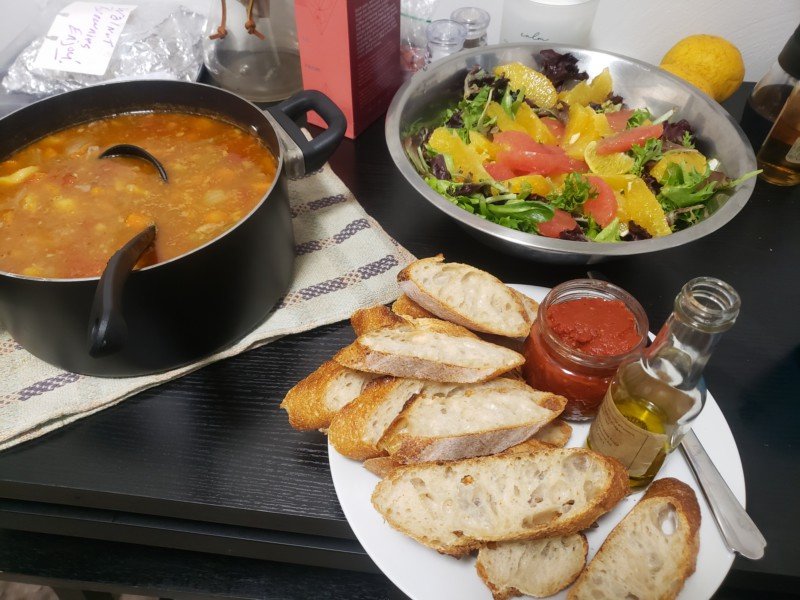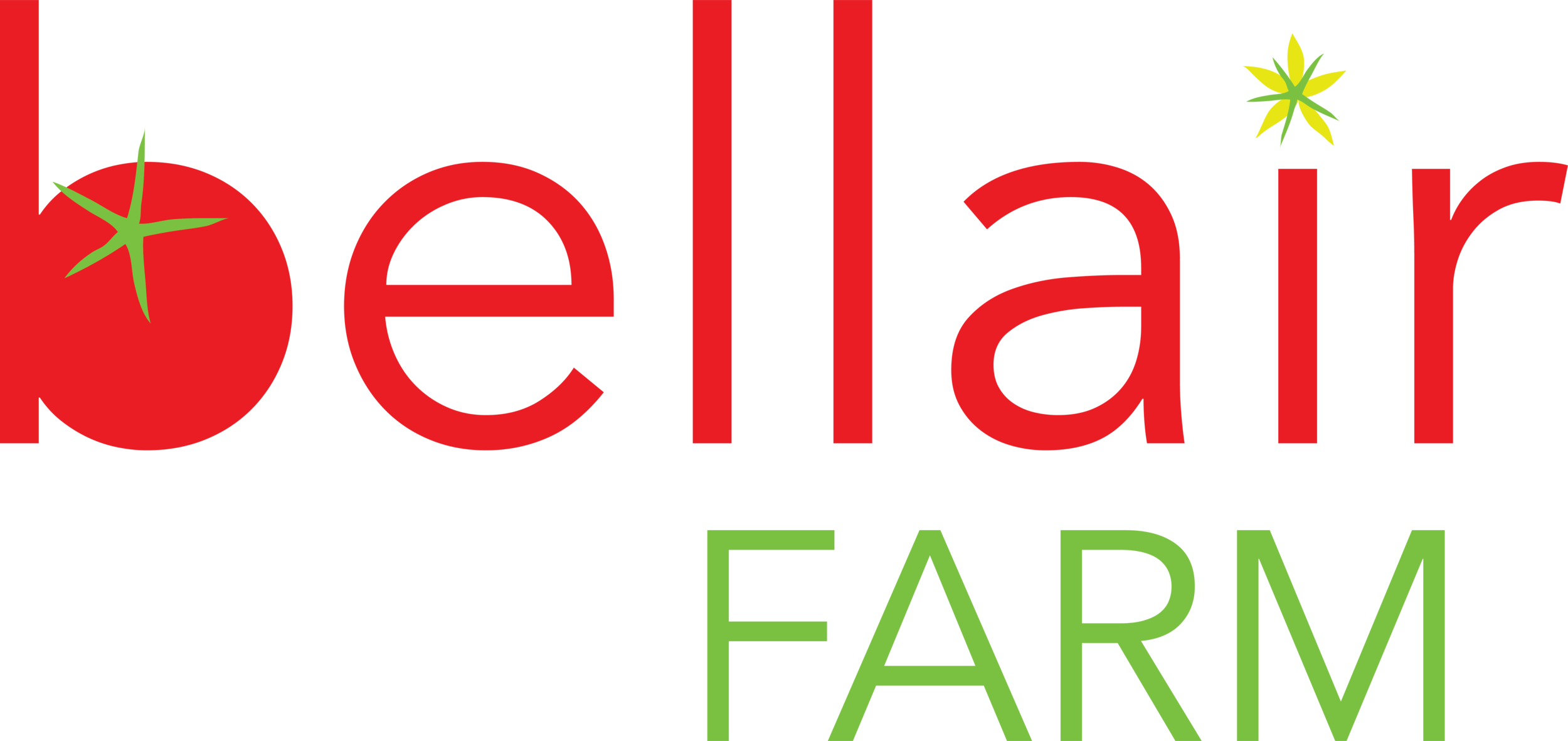Whole Tomato Paste
So, remember when we were overloaded with tomatoes this year? Well, we couldn't bring ourselves to compost the perfectly ripe, beautiful fruit we had, even though we couldn't get rid of it with bonus tomatoes in every CSA Share! We started putting the tomatoes in the freezer. We knew we would use some for our pizza sauce and salsa, but even after pulling about 900 pounds for those two purposes, we still have a literal mountain of fruit in the walk-in. Just ask George, our inventory manager, who has had to move them around and reach over them for months to get to other items in the freezer.
Now, as one of the farmers who grew these, I know their value. But truth be told, my own pantry is already bursting with the 45-quarts of tomato puree I canned for myself at the Prince Edward County Cannery this past summer! I wanted to pull out a bag and demonstrate for our customers how to handle that many frozen tomatoes, but I just don't need any more tomato puree at the moment. That's when I had the idea of tomato paste.
Tomato paste is something I've never made, but then again, I've never had 2 tons of tomatoes hanging out 100 feet from my house, either. I approached the whole thing as an experiment, not knowing how I was going to do it. In the end, I decided to do an oven-roasted tomato paste because I'm notorious about burning things when I try to do low-and-slow cooking on the stovetop. I figured it was a safer bet and might impart some nice sweetness. The other decision I made was to try a whole-fruit tomato paste, meaning I would not exclude skins or seeds in the original preparation. This is because I wanted to make it as easy as possible for anyone else to make it and maximize nutrition. Making it like this also minimized waste. Just because we are rolling in tomatoes now doesn't mean that will be the case next year!
The basic method was incredibly simple: I thawed the tomatoes in a cooler to catch the ice melt. When the tomatoes thaw, they shrink a TON. I poured off that water to speed up the concentration process. Alternatively, you can use that water in soups or stews for a very light tomato-syrup flavor. After thawing, spread the tomatoes in a single layer on two baking sheets and put them in a 350 degree oven. After that, it's a long process of checking on them, stirring, and reducing the heat gradually as you need. If your tomatoes aren't 100% thawed before putting them in the oven, the water might separate from the pulp and you can spoon that off to speed the process. The main thing is you need to keep incorporating the corners and edges back into the middle or they will start to scorch. Do this every 45 minutes at first and more frequently as it gets thick. Similarly, keep poking any tomato skin or pulp that's above the liquid line and mushing it down into the sauce. Approximately halfway through, when the tomatoes look like thick tomato sauce but not like paste yet, I took everything out of the oven, pureed it in my blender and ran it through my food-mill for a better consistency. Now, I said it is whole-fruit, and that's mostly correct. My food mill did exclude some of the bigger skin pieces, but it also let the soft and tiny skin bits pass through along with most of the seeds. Then, I sprinkled equal amounts salt and sugar (about 1 Tbsp each) on the paste and stirred it in. I spread the milled puree back onto the same baking sheets and kept going. For me, the entire cooking time took about 10 hours in an oven that I started at 350 F and reduced to 200 F by the end. You're going for..... you guessed it! A paste-like consistency.
From my 20.4# bag of frozen tomatoes (retail price $32), I was able to make 7.5 half-pints of whole-tomato paste. That's .54 cents an ounce, excluding your labor. Compare that to .62 cents an ounce for the highest-quality sauce in the grocery store.
I've already been enjoying my tomato paste. Some of it we just had smeared on some high quality bread for a little take on pan tomate, the famous Spanish tapas dish. I can also use it to instantly thicken up the puree I've already got loads of for really quick weeknight meals. If you don't like seeds and skins, just make sure your tomatoes are 100% thawed and then use a finer screen on your food mill to process before the oven process. I find the skins and seeds to compliment the flavor of the pulp and I like the added nutrition. Store your paste in the freezer, where it will keep for months (and take up much less room than the bag of tomatoes did!).
Bellair will be selling bulk frozen tomatoes at the awesome rate of $32 per bag until we sell out. If you don't want to cook it all down for 10 hours, you can instead just do it on the stovetop and make it marinara style. Let us know what you're doing with your tomatoes!
